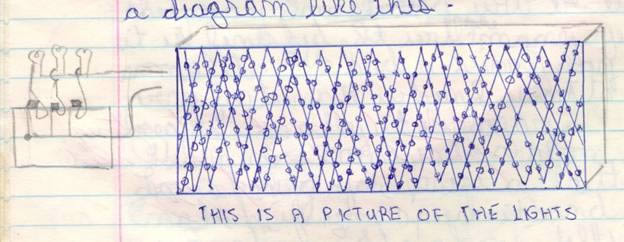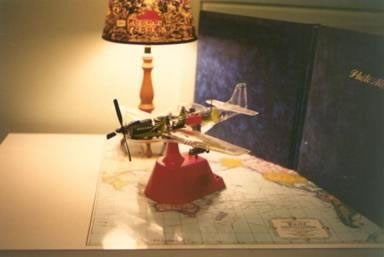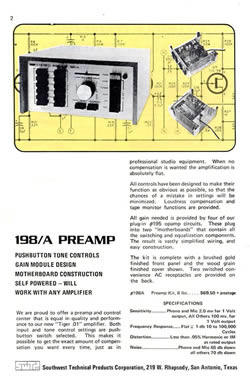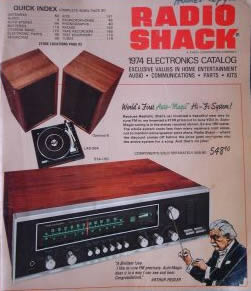Projects Overview
Living a life as a project oriented individual (happiness through engaged activities)
As one of those obsessive/compulsive project oriented people, I have personally undertaken numerous projects that I have fond memories of. Of course, building a business is just another project, and so this has been a powerful theme that has been woven into my life since an early age.
Looking back on it all, it is clear that my first mega-project was the design and construction of my high school stereo system, specifically the studio monitors I worked on from grade 9-11. Since that fateful project I have taken similar all-consuming approaches to many other projects, but in the end, my greatest fondness seems to have fallen into 2 major categories: all things audio/stereo/music/electronics (and later computer) related, and all things automotive related. Since first owning our home in 1989, and the need/opportunity to renovate it, my biggest and most expensive projects have likely been those renovations, but in terms of passion and life-long interest, it still falls back to audio and automotive projects.
I had 2 primary sources of information that formed the genesis for some of my earliest audio/electronics projects:
- The Southwest Technical Products Corp (SWTPC) Electronic Kits Catalog - the source for my colour organs and one of my stereo amplifiers
- The yearly Radio Shack Catalog
Click here soon to read excerpts from the 1974 Radio Shack catalog
Here is a laundry list of projects I have immersed myself into over my lifetime:
-
Delving into a long list of childhood projects (1972-1979):
- Motorized go-karting projects, grade 5-7 (different designs, performance changes, etc.)
- Mini-bike projects, grade 8-9 (engine mods, paint schemes, etc.)
- 3 and 4 channel Electronic colour organs, grade 7-9 (the perfect complement to a 'stereo' in the 1970s)
- Studio monitor speaker design/assembly project, grade 10-11
- 10 band Equalizer (stereo) project, grade 11
- 12x2 segment dB level Power Meter (stereo) project, grade 12
- 3 way active cross-over (stereo) project, grade 11-12
-
Starting up a long series of business entrepreneurial adventures (see the business sections of this site): Concrete Maturity Meters (1982-1986), Audiodial (1988), Digitune (1989), PCS Wireless (1993-1995), Intrinsyc Software (1996-2006), Consequent Technologies (2002-2003), and Mobidia Technologies (2008-present), etc.
-
Jumping into endless automotive hot rodding projects running from 1981 until the present - see the automotive section of this site (actually starting as a youth with go-cart and mini-bike mods - see my 1st book: Some Childhood Memories)
-
Playing the role of 'reno man' with seemingly endless family home and yard renovation projects, big and small, from 1989 to the present
-
Creating our series of Spratt Family Almanac CDs and DVDs ('words, photos, video and music') for our extended family and close friends from 1998 to the present day (as well as a much more extensive private web site covering our family from the 1900's to the present)
-
Designing, building and racing my Chevelle and S-10 race cars (1997-2001, complete with the creation of a race team, facilities and equipment/support vehicles - see the automotive section of this site), and now my 'Ultimate 1983 Rabbit GTI' project
-
Publishing my book and music CDs: 'Some Childhood Memories', for my children (2001)
-
Producing a book and set of music CDs (remastered tapes from the 1970s) commemorating the Point Grey High School 'Green Room 'Gang' musician/parent reunion event in 2002
-
Producing an account of my great grandfather, Neil Sutherland's exploits during the Klondike Goldrush in the 1890s (2003)
- Recording a new song composed by Andrew Atkins and producing a music video for him on the occasion of his 50th birthday (2008)
- Building a web site and publishing a book with May Brown on Camp Deka (2009)
- Publishing my book: '3-2-1 Launch, Graduating from high school andtTransitioning to independence'', for my children (2010)
- Creating more than 75 multi-media DVDs and video presentations for family, friends, and community groups for their special event needs from 2000 to the present
Current projects: completing this web site, and my Ultimate 1983 Rabbit GTI project
Background Details on my Grade School Audiophile Obsession
[excerpted from my Some Childhood Memories Book]
I learned a lot about science and specifically physics through my developing interest (which became an obsession) in audio equipment in grade school. I learned all about logarithmic equations and their practical application to human senses (it takes a ten times increase in sound energy levels for something to become apparently twice as loud. This also applies to our sense of light, and also to how our nerves in our body function and communicate with our brains. It is an amazingly efficient and ingenious way for our bodies to provide us with the ability to sense an extremely wide range of sensory perception inputs with the limited internal dynamic processing capabilities of the cells in our bodies).
Sound and electronic representations of sound (as well as radio frequencies for that matter) are all a represented by the ‘decibel’ as a unit of measure (named after a famous Canadian, Alexander Graham Bell – in the inventor of the telephone). 1dB is the minimum difference in sound level that a human can hear, while 10dB represents double the apparent volume or sound level, and 20dB is four times, and so on. There are many different subsets of decibel measurements used for different types of signals: dBa, dBv, dBmv, etc.
Sound has a range of pitch or frequency, and the quality of an audio component is often expressed in terms of its ability to transmit a wide range of sound frequencies without degrading the sound quality. A frequency response curve, from 20 Hertz (the lowest sound a human can hear) to 20,000Hz (or 20KHz, the highest sound a human can hear) is also plotted in a log scale with dB on the Y-axis and frequency on the X-axis (a so called dual log scale graph).
All of this technical mumbo jumbo was critical to know if I wanted to make any sense at all of what an audio system was all about.
Along with dBs and Hz were various types of distortion specifications that I needed to understand. For amplifiers the distortion was measured as a percentage of the clean signal, such as 0.1% THD (total harmonic distortion) with the amplifier operating at full rated RMS (root mean square) power into a particular impedance load (how much current was being delivered along with the voltage to the speaker coil).
There were also measurements of IM (inter-modulation) distortion as well as things to consider like momentary peak output power. For tape decks, ‘signal to noise ratio’, ‘channel separation’ and ‘wow and flutter’ were important specs with a lot of technology going into processing circuitry like Dolby A, B, C, S and Hx Pro and dbx that attempted to get around the physical limitations of magnetic tape media.
FM tuners had their own unique specifications for ‘selectivity’ and ‘sensitivity’ while speakers also had specs for ‘sensitivity’ and ‘off-axis frequency response curves’ to consider. It was an endless journey into the minutia of audio science and I managed to build a complete understanding of what the whole range of specifications really meant to the listener – an audiophile hobby for life was developing the more I learned and discovered.
A really big thrill for me was spotting the manufacturers who would mislead consumers with inaccurate specifications – I felt that I had to know what it all meant to avoid being cheated by unsavoury stereo salesmen who usually knew just enough jargon to be dangerous.
Speakers are physical things as they convert electrical signals into sound pressure waves, which in turn interact with the acoustics of the speaker enclosure and subsequently the room, that the speakers are placed in. This is where things got really tricky and subjective for me. You can have a perfect cartridge and turntable (the precursor to the modern CD player), a perfect pre-amp and power-amp and then the speakers would turn it all into mush. A good speaker system at or near rated power would have distortion levels somewhere between ten and one-hundred times higher than any amplifier and a good speaker enclosure and excellent acoustic room would only have a frequency response accuracy ten times worse than any amplifier would. So you can see why I became highly interested and involved in understanding and mastering the principals of acoustics and speaker design – it was the weak link in the audio system chain – and still is today with modern systems.
Very little of the mathematics and physics of this was covered in high school and even some of it wasn’t covered during my undergraduate classes in electrical engineering at Queens. I ended up taking some graduate level computer music courses that got into these areas in my forth year in conjunction with pure music composition classes that managed to cover most of the rest of it. For my whole adult life as an electrical engineer I have drawn on the knowledge and experience I gained between grade six and grade twelve in this subject area. It has helped me understand radio frequency communications almost as well as any specialist in wireless technologies, and cable television infrastructure – both areas I have invested my career in and made successful financial investments in.
Personal Journal Notes on Project Topics from my Elementary School Days
My Motorized Go-Kart (written September 7, 1973):
I love making things. Last summer I made a go-cart, so this summer I made another go-cart, only this time it had an engine (gasoline) in it. It had a throttle and brake and it could go up to fifteen miles per hour. My go-cart can climb a forty-five degree slant (it can’t right now because it has a flat tire). It has a two-horse power engine and has a high gear ratio. The engine is mounted on the base of a modified lawnmower and the back wheels are mounted on the base. The frame is made out of wood and the front is steered by foot, and it has a padded seat.
My friend, Drew Atkins made a go-cart that was roughly like mine. Luckily I live on a dead end street, so I can ride my go-cart around the cul-de-sac, and even more lucky is that my neighbours all think it’s great, so they don’t complain. Of course I had a top-notch muffler on it.
My Light Organ (Written November 16, 1973):
October 11 was my birthday. This year I got a light organ kit, clothes and a new record.
A light organ is a series of coloured lights in a box. The box is plugged into a record player or a radio. When the sound waves get inside the light organ, the lights light up according to the different sound waves.
My Dad helped me put the kit together one night. We had to weld the transistors, capacitors and other components to a printed circuit. Then the next day we went to a shop on Robson Street to ask a man that makes light organs if he would give me some information on how to build the rest of it. He told me how large to build the box and how to wire it up. He drew a diagram like this:
I used mini Christmas lights. My light organ is black on the outside and inside, with a sheet of plexi-glass over the lights. It is 4 feet high, 2 feet wide and it has 1 foot in depth. I have red, blue, green and yellow lights in my light organ. The lights are controlled by the kit I put together. Most light organs are about 1 ½ feet high and ten inches wide. My light organ has about 150 lights in it. The blue lights are most sensitive to the sound, the red lights are second and the green and yellow lights were least sensitive.
Although my light organ isn’t quite finished yet, it should be done by Monday. Would you like me to bring it to school?

My Favourite Model (Written February 8, 1974):
My favourite model is the one I got for Christmas. It is a U.S.A.F. F-51D Phantom Mustang. The wingspan is 17”, and it is 14” long. The outside shell of the model is clear plastic so you can see inside it and it has four different colours for the parts.
There is an electric engine inside the plastic motor that makes the propeller turn. The window over the cockpit moves back and fourth the wheels go up and down at the touch of a motor button and even the small wheel at the back of the plane goes up and down automatically. When the wheels are brought up the wheel covers act like doors and lock the wheels in the plane.
On the stand of the plane there are two leavers. If you pull the lever on the left, the bomb on the left drops. This is the same with the other lever. The model was very hard to build because it has so many working parts controlled from remote places. If you don’t do everything exactly like the instructions say, nothing will work. Luckily I built the model correctly so everything works.
The model has a lot of decals on it and some painting but when I took the picture of it I hadn’t put any on yet. The reason I like this model more than any other model is because: 1) it is clear plastic and the model has four different colours in it; 2) it has a lot of moving parts; 3) it is sturdy; and 4) because I enjoyed building it.

Forward to my stereo/audio systems over the years - projects and purchases
Forward to our live music jamming setup


